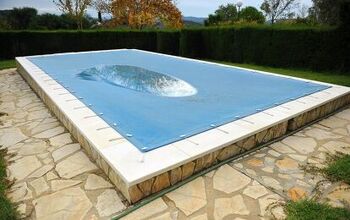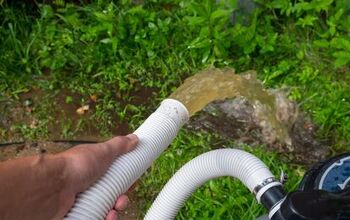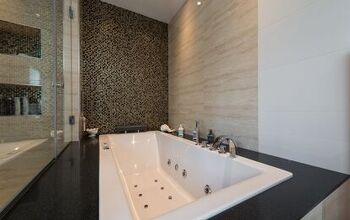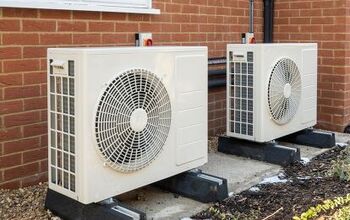What Size Fireplace Grate Do I Need? (Find Out Now!)

Fireplace grates are often considered to be a staple component of open wood-burning fireplaces, as they help enhance the efficiency of the fire. They also keep the heat of the fire from the hearth and the walls of the firebox. Though, when it comes to purchasing a new fireplace grate, it’s important that you obtain the right measurements.
This brings us to the question at hand and the one that’s likely on your mind: “What size fireplace grate do I need?” In order to determine what size fireplace grate you need, to know the rear width of the fireplace firebox, the front width of the fireplace opening, and the total depth of the firebox. These measurements will give you a guide to begin shopping for the ideal fireplace grate.
With that said, let’s take a deeper look at what exactly a fireplace grate is, what purpose they serve, how to know if your fireplace needs one, and how to ensure that you get the right size fireplace grate for your home.
Do You Need Brick and Stone Fireplace Installers?
Get free, zero-commitment quotes from pro contractors near you.

What is a Fireplace Grate?
While you can certainly put the wood directly on the floor of your wood fireplace’s hearth, having a fireplace grate will improve the appliance’s overall safety, performance, efficiency, and appearance. Simply put, a fireplace grate is a device that consists of either steel or cast-iron bars with legs and is placed on the floor of the fireplace.
Wood, other forms of solid fuel, are stacked on the fireplace grate when operating a fireplace. These grates serve to raise the logs off the floor, which improves the flow of oxygen to the fire. They generally have a rectangular shape and grille or mesh-like features that allow the ash to fall through onto the hearth. Fireplace grates also enhance the safety of fireplaces, as they prevent burning logs from rolling out of the hearth and, thus, causing a house fire.
Some fireplace grates are outfitted with curved bars that are meant to direct unburnt logs toward the flames as the fire is burning. Whereas, other grates feature baskets that can hold a significant amount of wood.
What is the Purpose of a Fireplace Grate?
With the definition of a fireplace grate in mind, this essential tool can serve many purposes:
- Help raise an open fire off of the floor of the fireplace.
- Protect the hearth from the highest temperatures of the fire.
- Provide enhanced airflow to the fire from below.
- Improve ventilation, which can help reduce the amount of smoke produced that could result from the wood not getting enough oxygen.
- Make starting fires easier.
- Keep the fire contained within a specified area, thus, burning more efficiently.
- Reduce the chance for smoke to enter the room, by keeping the fire towards the back of the firebox.
Do I Need a Fireplace Grate?
Although fireplace grates are not a necessity, they offer a number of benefits. For a relatively affordable price, a fireplace grate can help make burning and maintaining fires in your fireplace easier, while also maximizing heat output and efficiency. While you do not have to have a fireplace grate, they can make your life a whole lot easier.
After all, open fireplaces are traditionally not very efficient sources of heat for a room or entire home. By using a grate instead of burning fires right on the floor of the firebox, you can increase the overall heat output of your open wood-burning fires. So, whether or not you need a fireplace grate is a matter of preference, but definitely worth considering.
What Size Fireplace Grate Do I Need?
Whether you’re looking to purchase a fireplace grate for the first time or you need a replacement, it needs to fit inside the firebox of your fireplace. It cannot be too large or too small. A fireplace grate that is too small will not hold enough logs and a grate that is too big simply won’t fit in the firebox.
Since fireboxes do not come in standard sizes, you’ll have to do the measurements yourself. Ensuring that you obtain the correct measurements is a crucial step in purchasing a fireplace grate. In order to do so, you’ll need a measuring tape, and a pen or pencil and paper to jot down the measurements as you collect them.
In order to determine the proper size fireplace grate that you need, you must measure width and depth of your firebox.
Measuring Width
When measuring the width of the fireplace, you need to collect two distinct measurements:
- The rear width of the fireplace firebox, at the very back of the fireplace
- The front width of the fireplace opening, in very front.
The reason for taking two measurements for width is because many fireplaces taper from the front of the firebox to the back. You don’t want your fireplace grate to fit snugly inside of your firebox. Instead, there should ideally be about three inches of clearance between the fireplace grate and the fireplace on all sides.
To account for this clearance, take the minimum width measurement and subtract six inches from it. This will give you the maximum width that your fireplace grate can be for your particular fireplace.
Measuring Depth
To measure the depth of the fireplace, start at the fireplace door, or the beginning of the fireplace opening, and measure to the back wall. With the depth measurement, subtract six inches from it to account for the three inches of clearance needed on all sides. This will give you the maximum depth that your fireplace grate can be for your specific fireplace.
Now that you’ve obtained the maximum width and the maximum depth for your fireplace grate, you can use these measurements as a reference point when shopping. Keep in mind that the grate you choose can be smaller than these dimensions, but should not be any bigger.
Types of Fireplace Grates
In addition to knowing what size you need, understanding the different types of fireplace grates available to you is the key to finding the best fireplace grate. Generally speaking, there are three main types of fireplace grates:
1. Bar Fireplace Grates
These fireplace grates consist of a series of parallel steel bars, which are designed to cradle the wood logs. The bars are attached to four legs that raise the logs a couple inches from the base of the firebox, enhancing the flow of oxygen to the fire. There are some higher-end bar fireplace grates that are outfitted with ember retainers connected to the bottom for catching burning embers.
2. Basket Fireplace Grates
Unlike bar fireplace grates that have distinct pieces welded together, basket fireplace grates are generally made from one piece of cast iron. They have four sides and much narrower gaps than their bar counterparts. Basket grates tend to be more expensive than bar grates, but can hold larger amounts of wood securely.
3. Vertical Fireplace Grates
The main difference between a vertical fireplace grate and a bar or basket grate is that it keeps the fire constrained against the back wall of the firebox. Their vertical shape holds logs vertically, which pins them against the rear wall. As the logs located at the bottom of the fireplace grate burn, the above logs drop down onto the embers to replace them.
With this design, virtually no tending is required by the user. Plus, since the logs are stuck to the back of the hearth, a very small amount of smoke can escape the firebox and end up in your living spaces.
Do You Need Brick and Stone Fireplace Installers?
Get free, zero-commitment quotes from pro contractors near you.

Final Thoughts
When it comes to choosing the correct size of a fireplace grate, the goal is to choose one that fits the firebox well and has a three-inch buffer on all sides. You should also consider purchasing one that is light enough to lift and maneuver, as grates must be moved occasionally to clean up the ash that collects underneath.

Jessica considers herself a home improvement and design enthusiast. She grew up surrounded by constant home improvement projects and owes most of what she knows to helping her dad renovate her childhood home. Being a Los Angeles resident, Jessica spends a lot of her time looking for her next DIY project and sharing her love for home design.
More by Jessica Stone

























![How To Reset A Whirlpool Cabrio Washer [In 5 Easy Steps!]](https://cdn-fastly.upgradedhome.com/media/2023/07/31/9076531/how-to-reset-a-whirlpool-cabrio-washer-in-5-easy-steps.jpg?size=350x220)

